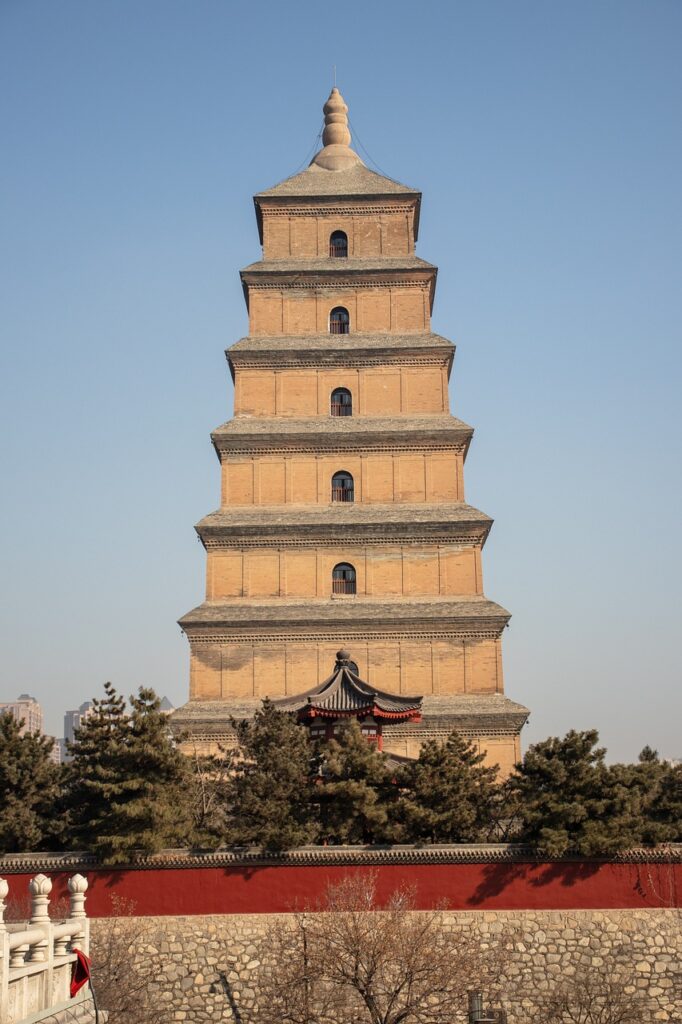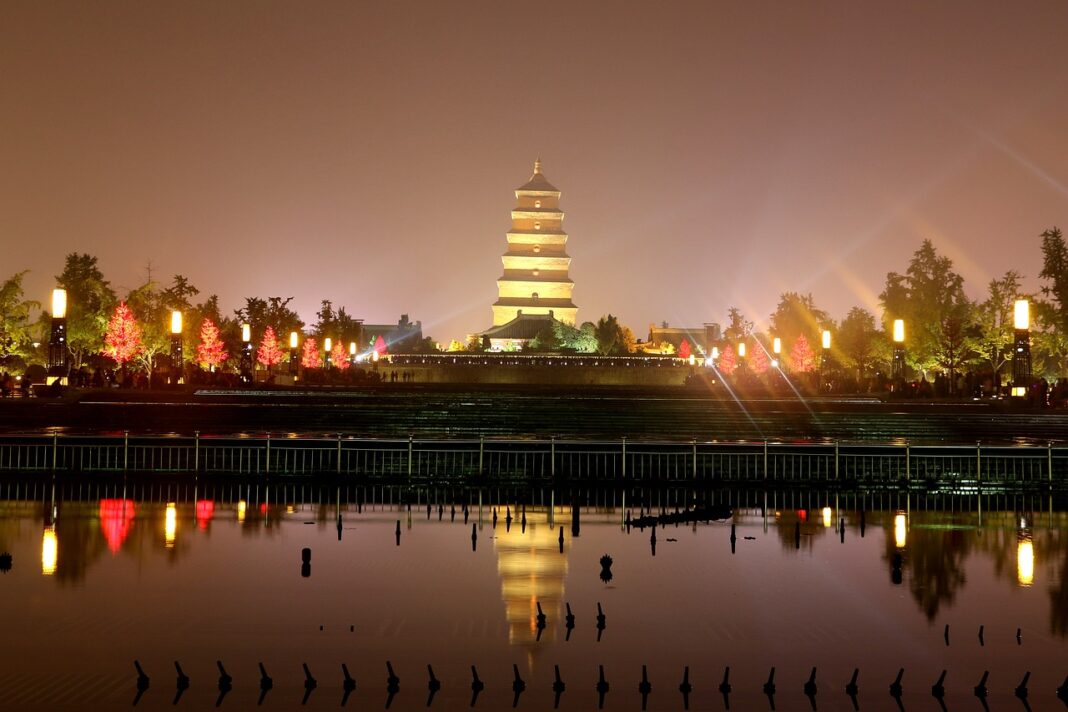By Eleni-Vasiliki Bampaliouta
From Xi’an, China’s ancient capital at the foot of the Qinling Mountains, to Lisbon, the European city on the continent’s western edge; from the coastal city Xiamen in southeastern China to the Port of San Antonio across the Pacific: the Belt and Road Initiative (BRI) is connecting countries across the globe, where people with different skin colors and speaking different languages proudly nurture their cultures. Living in a world of different civilizations, beliefs and customs, should we progress alone or together? And should we stay behind close doors or embrace one another? China’s answer is clear: Build a bridge of interaction and mutual learning, and make the BRI a road connecting different civilizations.
A new approach to civilization
The BRI was put forward by China in 2013. Recognizing diversity as a basic feature of the world, BRI’s concept of “mutual learning among civilizations” calls for treating all civilizations in an equal and inclusive manner, respecting the systems and beliefs of all countries, and promoting understanding and trust among different civilizations. Rejecting the outdated Cold War mentality, it represents a big step forward in humanity’s approach to civilization, and is garnering growing support globally.
A platform for intercivilization dialogue
Over the past decade, Belt and Road partner countries have carried out diverse people-to-people exchanges and cooperation, which have become bridges for mutual cultural appreciation. Initiatives such as the Silk Road International League of Theaters, the International Alliance of Museums of the Silk Road, the Silk Road International Arts Festival, the Silk Road International Library Alliance and the Silk Road International Gallery Alliance had attracted close to 100 countries and international organizations by the end of 2022. Luban Workshop, a vocational training program, is today being conducted in more than 20 Asian, African and European countries to help cultivate a pool of high-caliber technical personnel for the local community. Chinese and foreign archaeologists are working together to explore the cultural relics of the ancient Silk Road and renew the exchanges along the Silk Road with modern-day cultural interactions. The BRI has built a platform for dialogue among civilizations, where the flowers of different civilizations bloom and shine together.
For a better world: contribution of the Chinese civilization
Our world is going through profound changes of a magnitude unseen in a century. China, while actively advocating dialogue among civilizations, is committed to contributing the energy of the Chinese civilization to the world, in an effort to put the concept of “mutual learning among civilizations” into practice, and add new content to the BRI. China’s endeavor to further the country’s development along the Chinese path to modernization and create a new form of human advancement sends a strong message—modernization does not mean Westernization, and each civilization is valuable for being uniquely its own. This strengthens the confidence of different civilizations to shine together and complement each other. China has put forward the Global Civilization Initiative that calls for respecting the diversity of world civilizations, championing the common values of humanity, promoting the inheritance and innovation of civilizations, and enhancing international people-to-people exchanges and cooperation. The aim is to open up new prospects in cultural interaction and people-to-people bonds among all countries, and contribute more to the progress of human civilization.
As once-in-a-century changes continue to unfold globally, humanity is confronted with multiple challenges and crises. The resurgence of anachronistic mentalities trumpeting the superiority of certain civilizations and clash of civilizations is posing a serious threat to world peace, stability, development and progress. At a time when all countries are interconnected with a shared future, inclusiveness, coexistence, interaction and mutual learning among civilizations play an irreplaceable role in advancing the modernization of human society and diverse human civilizations. By working together to build the Belt and Road into a road connecting different civilizations, we people of countries around the world will be able to join force and tackle all kinds of risks and challenges together.
This civilizational mentality and dialogue provides not only opportunities for the various parties involved, but, through the exploration of these new development strategies, the creation of a better future.

A Road of Green Development for the New Era
Along Kenya’s Mombasa-Nairobi Standard Gauge Railway, animals as tall as giraffes cross the railroad bridges easily through the large passages built for them. At solar farms in Pakistan’s Punjab province, plants and fruits are grown under the solar panels. These scenes not only showcase the tangible outcomes delivered under the Belt and Road Initiative (BRI), but also highlight how the Belt and Road cooperation is turning the inspiring vision of green development into reality with concrete actions.
Ancient Chinese wisdom makes new contribution
A sound ecosystem is essential for the prosperity of civilization. For thousands of years, the Chinese civilization has set great store by the idea that humanity must seek harmony with Nature. Into the new era, China is committed to the principle that lucid waters and lush mountains are invaluable assets, and pursuing modernization that features harmony between humanity and Nature. Thanks to persistent efforts, incredible progress has been accomplished in its eco-environmental protection and green development endeavors.
While steadily advancing green development at home, China has explored to contribute its ideas and experience on green development to the Belt and Road cooperation. In 2019, at the opening ceremony of the second Belt and Road Forum for International Cooperation, China made clear that green will be a defining color of the BRI, and green infrastructure, green investment and green financing will be promoted to protect the planet we all call home. This appeal to build a green Silk Road together demonstrates China’s leadership as a major country in global eco-environmental governance, and contributes Chinese wisdom to the joint endeavor for a clean and beautiful world.
Boosting the green development of partner countries
In building a green Silk Road, China has not only expressed its commitment, but more importantly, taken concrete actions. In Senegal, China takes an active part in Dakar’s waste water treatment project to improve the water quality in surrounding areas and rehabilitate the environment along the beaches, which benefits hundreds of thousands of residents in the bay area. In Ghana, the Sunon Asogli Power Plant project has been completed with help from China. Supporting 25 percent of Ghana’s electricity demand, the plant has alleviated electricity shortage for local communities with green and clean power. In Kazakhstan, new energy projects delivered with participation of Chinese enterprises, such as the Zhanatas Wind Power Station and the Turgusun hydropower station, have provided a strong boost to the country’s green and low-carbon development.
As the world’s largest market and equipment manufacturer in the field of clean energy, China has conducted green energy cooperation with more than 100 countries and regions. In Belt and Road partner countries, Chinese investment in green and low-carbon energy has surpassed that in traditional energy. This has promoted greater balance between socioeconomic development and eco-environmental protection, brought more opportunities for green development to participating countries and regions, and delivered green benefits to local communities.
With this strong emphasis on infrastructure and green development, as well as international cooperation, the BRI provides a powerful model towards increasing global prosperity between friendly nations.
The BRI shines the light of development and provides new impetus for global development.
Development holds the master key to solving all problems and is a timeless theme for humanity. The BRI, focusing on development which best serves the common interests of all countries, has provided a platform for development with great inclusiveness, and promoted the common development and prosperity of all countries around the world. From 2013 to 2022, the total value of China’s trade in goods with key Belt and Road partner countries grew at an average annual rate of 8.6 percent, and the two-way investment exceeded USD 270 billion. Newly signed contracts of projects are worth over USD 1.2 trillion, and an array of infrastructure projects including roads, bridges and ports have come into commission, further promoting land, maritime, air and cyberspace connectivity.
The Belt and Road cooperation is not a solo performance, but a symphony played by all. The BRI has effectively synergized development strategies and practical demands among partners, and has helped partner countries transform their own advantages into tangible fruits of development. Over the past decade, overseas cooperative industrial parks including Thailand-China Rayong Industrial Zone and Ethiopia’s Eastern Industry Zone have flourished, serving as a catalyst for local industrialization and modernization. The World Bank estimates that by 2030, Belt and Road cooperation will bring an annual benefit of USD 1.6 trillion to the world, accounting for 1.3 percent of the global GDP and injecting strong impetus into global development.
The BRI shines the light of happiness and makes new contributions to people’s well-being.
The people are the foundation of a state. When the foundation is strong, the state will be secure. Improving people’s livelihood has become another distinctive feature of the BRI. Over the past ten years, the BRI has helped lift nearly 40 million people out of poverty and created paths toward opportunity and prosperity for the local people. A large number of “small yet smart” livelihood programs such as schools, hospitals and stadiums have been put in place one after another, and more and more people are living a better life with a greater sense of happiness and benefit. The China-Europe Railway Express completed over 15,000 freight services, serving as a health train delivering medical supplies during the pandemic. In January this year, the China-aided African Center for Disease Control and Prevention (CDC) headquarters, the first CDC in Africa featuring modern office facilities and high-end laboratories, was successfully handed over. Facing the global food crisis, China and its BRI partners have been actively engaged in agricultural cooperation and popularized hybrid rice, Juncao and other practical technologies, making positive contributions to ensuring food supply for the local people.
The BRI shines the light of hope and opens up new prospects for common prosperity.
The U.N. 2030 Agenda for Sustainable Development is now encountering difficulties in its implementation, and the development gap keeps widening. Countries around the world have a stronger aspiration for development and cooperation. Many developing countries have seized the momentum of the BRI and got on board the express train of China’s development. As we accelerate the development of the health Silk Road, the digital Silk Road, the green Silk Road and the Silk Road of innovation, more opportunities for cooperation will be created. This will open up broader prospects for industrial upgrading, energy transformation and innovative development in those countries.
The third Belt and Road Forum for International Cooperation will soon be held in Beijing. It will be the grandest event to commemorate the 10th anniversary of the BRI, and an important platform for all parties to discuss high-quality Belt and Road cooperation. We hope that all parties, standing on the new starting point, will make the pie of development increasingly bigger, so as to provide solid support for people’s well-being and create more opportunities for economic growth. In doing so, we will usher in another wonderful decade on this road of global prosperity.



